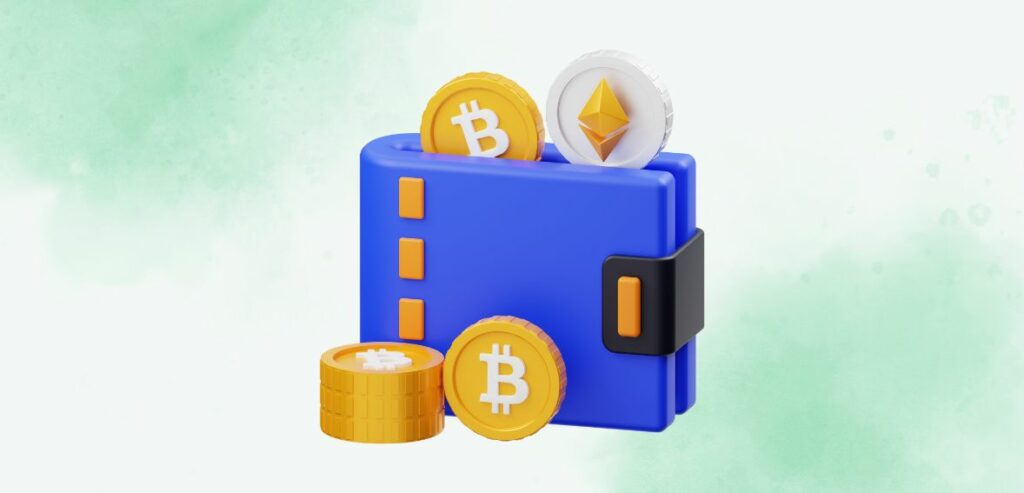Cryptocurrencies are virtual currencies that rely on blockchain technologies to secure and track transactions. Several companies’ innovative use of blockchain technology has propelled this industry into the forefront of modern technological advancements. With its decentralized nature and ability to ensure transparency and security in transactions, blockchain has paved the way for a bright future.
As we look ahead to 2024 and beyond, it is clear that blockchain and crypto will continue to shape the finance and technology market. The growth of the cryptocurrency market can be attributed to the rising popularity and adoption of these digital assets. Stay informed about the latest trends in blockchain and crypto as we explore and analyze the blockchain and crypto trends for 2024 and what lies ahead in this ever-evolving industry.
Top Blockchain and Crypto Trends for 2024

Here are some key blockchain and crypto trends for 2024 to stay ahead.
1. Interoperability
Data availability layers serve a crucial function in the ongoing evolution of blockchain technology. The concept of modularity within blockchain networks represents a major shift that can help improve efficiency and scalability. By allowing individual blockchains to focus on specific tasks, such as consensus building or transaction settlement, data availability layers provide an amazing solution for securely storing and quickly verifying transaction details. This takes some of the workload off the central blockchain system by preventing congestion and reducing the frequent need for hardware upgrades among nodes.
With data availability layers in place, historical transaction records remain accessible and confirmable, ensuring the security and integrity of connected blockchains. These layers also have scalability and play a key role in maintaining trust within decentralized networks. The layers keep transaction details available for verification. This helps blockchains specialize in critical functions like settlement or consensus, reducing burdens on the central system. By taking transaction data off-chain, layers help prevent congestion and limit needed upgrades. They help ensure historic transaction records stay available and verifiable. This secures connected blockchains and preserves trust across decentralized networks.
2. NFT in 2024

It is predicted that the non-fungible token, or NFT, space will advance beyond its present applications in 2024, two years from now. Several significant sectors will probably investigate using NFTs to tokenize priceless digital assets, provide fresh income streams, and improve transaction transparency. In particular, the gaming sector is anticipated to see a significant NFT surge. Developers of video games are looking into using blockchain technology to tokenize non-fungible in-game things, giving users actual ownership of the items and the ability to trade them between different platforms and games.
This increasing adoption of NFT utilities outside the art world portends a broader adoption of blockchain technology in numerous industries. As technology progresses and the benefits of decentralized systems such as NFTs become more widely recognized, it is evident that digital currencies have the ability to transform a wide range of industries, not simply art and collectibles.
3. Government and Central Banks-Backed Digital Currencies
By 2024, digital currencies are expected to be a key blockchain component in the sector. Globally, central banks and governments are investigating the possibility of issuing their own virtual currencies in an effort to capitalize on blockchain technology’s advantages while retaining authority over monetary policy. CBDCs can improve financial inclusion, lower costs, and streamline financial processes.
Implementing CBDCs is expected to gain traction in 2024 as nations carry out feasibility studies and trial programs. This will impact the interaction between digital assets, traditional fiat currencies, and the larger financial ecosystem. In an increasingly digitized world, the emergence of CBDCs is an innovative move toward updating payment systems and transforming how people interact with money. With proper planning and regulation, CBDCs can completely transform global banking through more accessibility, efficiency, and security for all players in the financial system.
4. Restaking Becoming Popular
Restaking has become a common approach used by many cryptocurrency investors seeking to maximize the market’s returns. By locking up liquid staking tokens, known as LSTs, for additional rewards, people are able to earn extra income on top of their initial staking rewards. This process involves staking tokens such as ETH to receive receipt tokens.
These receipt tokens can then be restaked through restaking protocols, allowing investors to multiply their earnings even more over time. Essentially, restaking is similar to yield farming but with a streamlined and simplified method that makes it more accessible to a broader range of individuals. Not only does this strategy provide financial benefits, but it also contributes to enhancing the security of roll-up applications by offering an extra layer of protection. While maximizing returns, restaking helps maintain network security through its additional participation.
Overall, Restaking is a vital part of the ETH 2.0 vision. It allows developers to borrow Ethereum’s proof-of-work and restake Ethereum tokens currently staked on the Ethereum network. This process enables other blockchains to leverage Ethereum’s powerful engine, creating a more interconnected and robust ecosystem within the cryptocurrency world. Traditional crypto staking involves token holders locking up a certain amount of tokens or assets in a blockchain network to support its security and operations. By participating in staking cryptocurrency, users contribute to the network’s strength and earn rewards for their efforts.
5. Decentralized Physical Infrastructure Networks
Because of its alignment with the field of AI, DePIN attracted a lot of interest from cryptocurrency enthusiasts in 2023 and is expected to continue to do so in 2024, drawing in further investors. DePINs are distributed and open blockchain protocols that create, manage, and run physical infrastructure. In reality, the DeFi market grew by 15.2% in December 2023, maintaining the positive trend seen in November.
Hardware such as GPU processors for computational power, data centers for file storage, and wireless hotspot devices for connectivity can all be a part of this infrastructure. Anyone can store and access data on the Filecoin peer-to-peer storage network, which is crypto-incentivized. When providers deliver dependable storage services, they are compensated with FIL tokens. Other DePIN networks encourage users to donate GPU processing power by partnering with computer resource providers like Render and Theta Network. On the other hand, Helium is a decentralized network that incentivizes users to provide hotspot wireless network coverage.
6. Zero-Knowledge Proofs
Zero-knowledge proofs are revolutionizing the blockchain ecosystem, offering a groundbreaking solution to enhance user privacy and security significantly. This innovative cryptographic technology has transitioned from being a relatively unknown concept to now being at the forefront of blockchain development efforts. By utilizing Zero-knowledge proofs, users can privately conduct transactions with the assurance that their sensitive personal and financial information remains completely confidential while still proving the validity of their actions.
As concerns over data privacy continue to rise considerably in light of frequent large-scale data breaches that have compromised the sensitive information of millions of people, integrating robust Zero-knowledge technology into decentralized blockchain systems has become very important for builders looking to provide markedly stronger security measures to their users. The potential applications of Zero-knowledge proofs are extensive and varied, promising to usher in a new era for businesses and consumers within the blockchain industry. Those networks that swiftly and comprehensively incorporate strong Zero-knowledge proofs stand to attract a much broader audience base by offering remarkably enhanced privacy features and ensuring completely secure transactions for all parties involved while maintaining full transparency regarding the legitimacy of each transaction.
7. Enterprise Investment In Crypto

Despite all the recent turmoil in cryptocurrency, enterprise executives still show a strong interest in blockchain technology. According to industry analysts, the number of in-production blockchain engagements has grown by 138%. These forward-thinking companies have explored how blockchain can revolutionize their operations by creating more effective, efficient, and secure platforms for various business needs.
One area where crypto has shown promise is identity and access management, offering a decentralized solution that enhances security and privacy. Supply chain management is another key focus, with blockchain enabling transparent tracking of goods along every journey step. Smart contracts have also caught the attention of enterprises looking to automate processes and reduce costs through self-executing agreements. Lastly, document management and verification benefit significantly from blockchain, as it provides an immutable record of transactions that can be easily accessed and verified. While most organizations are currently only at the stage of exploring ideas or experimenting with blockchain for these uses, the potential for transformative change is clear.
8. RWA Tokenization
Real World Asset Tokenization, the tokenization of tangible goods like artwork, real estate, precious metals, and loans, is an innovative financial concept that involves representing real-world assets as digital coins on the blockchain network. This emerging approach has gained interest in traditional finance due to advantages such as secure decentralized trading, transparent ownership records, and fractional ownership.
For investors, tokenization provides a new solution for illiquid assets like expensive properties or valuable paintings. It allows ownership rights to be divided into many digital tokens. This lowers the minimum investment amount for small businesses while allowing easy, fast trading of property shares on the blockchain. As more companies test this transformative technology, digitalizing physical assets will likely change how we view and interact with possessions in the digital age. By converting real things into digital records, tokenization has the potential to make investing more accessible and modernize transaction processes.
Blockchain transparency allows buyers to verify art, classic cars, and real estate transaction histories among intangible assets like trademarks, patents, and copyrights. An owner’s property rights become tamper-proof, traceable, and verifiable in real-time when stored immutably on blockchains. Once tokenized, trademarks, patents, and copyrights resist tampering and enable real-time verification and tracing. The tokenization of credit markets by cryptocurrency has also occurred in recent years. Online, investors can buy US Treasury securities, cash-equivalent tokens, and bonds from a distance. Similarly, investors can profit by buying tokens for corporate loans from private creditors. The encrypted private credit industry has active loans surpassing $600 million as of October 2023.
Conclusion
Interoperability is one of the critical parts of blockchain and crypto trends for 2024. It easily tackles scalability issues through data availability layers, enhancing decentralized network trust. NFT applications expand beyond art, primarily gaming, indicating broader blockchain acceptance. Government digital currencies promise efficient transactions and financial inclusion. Compounding returns through restocking gains prominence, boosting network security.
Compatible with AI, DePINs draw attention to distributed infrastructure. Zero-knowledge proofs enhance privacy amid rising data concerns. Despite persisting enterprise investments in contracts, supply chains, and identity, blockchain transparency remains crucial, enabling real-time verification. Asset tokenization digitally represents tangible investments, transforming the market. Amidst innovation across sectors, stay informed to navigate future changes.
Frequently Asked Questions
What is the trend in blockchain in 2024?
In 2024, anticipate an evolution in blockchain trends marked by enhanced communication among new and existing blockchains. The focus will shift towards constructing a closely interconnected ecosystem, emphasizing cross-chain compatibility for seamless asset transfers across diverse networks.
Which crypto will boom in 2024 prediction?
While leaders like Bitcoin and Ethereum will maintain their prominence in portfolios, emerging cryptocurrencies like Solana and Injective are positioned as contenders for a significant role in the digital future.
How big is the blockchain market in 2024?
Projections indicate substantial growth in spending on blockchain solutions, reaching nearly 19 billion U.S. dollars by 2024.
Is 2024 a good year for crypto?
With the resurgence of the crypto bull market and the widespread adoption of stablecoins in payments and remittances, 2024 is poised to be a significant year of expansion in the crypto market.

